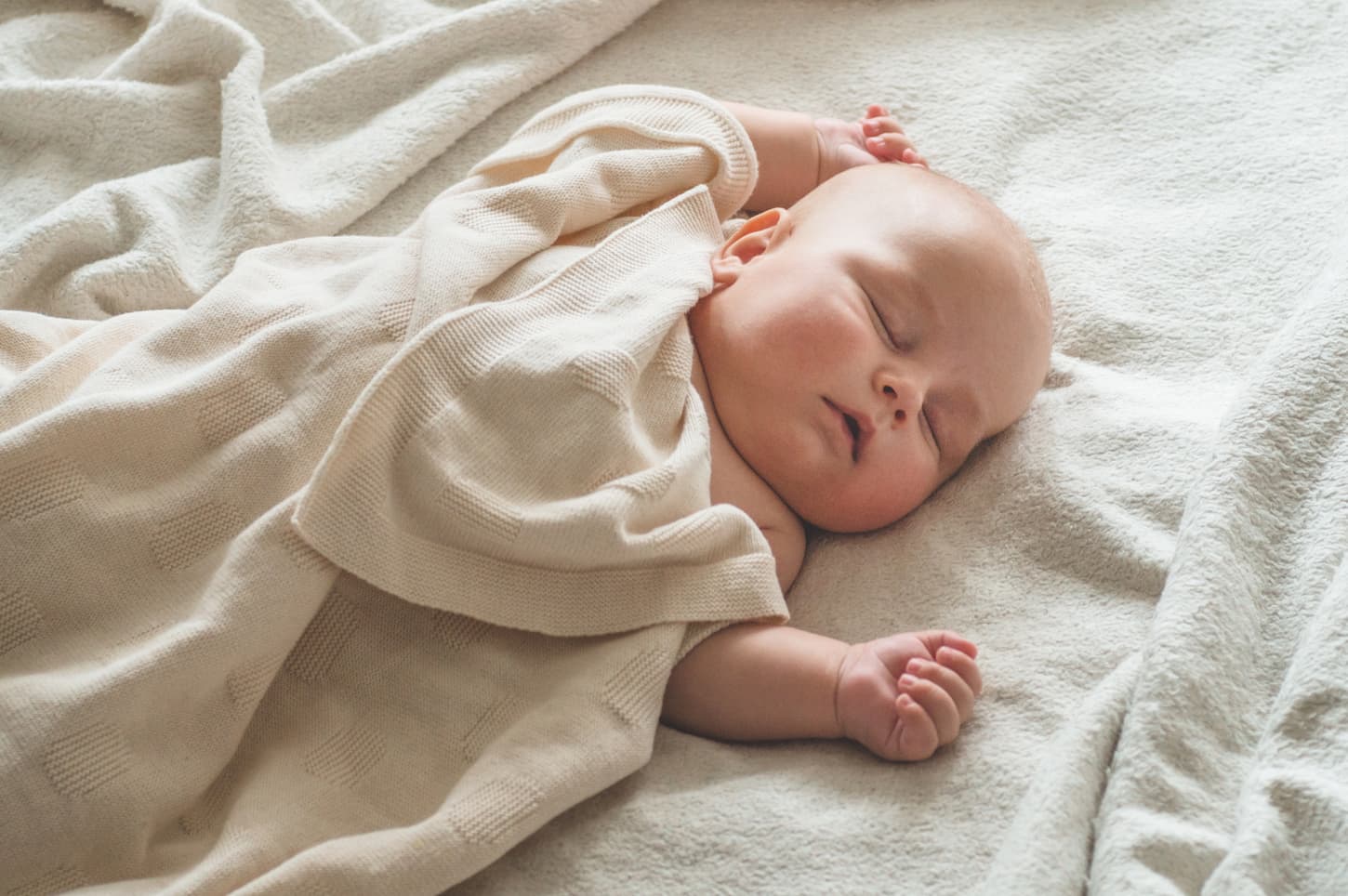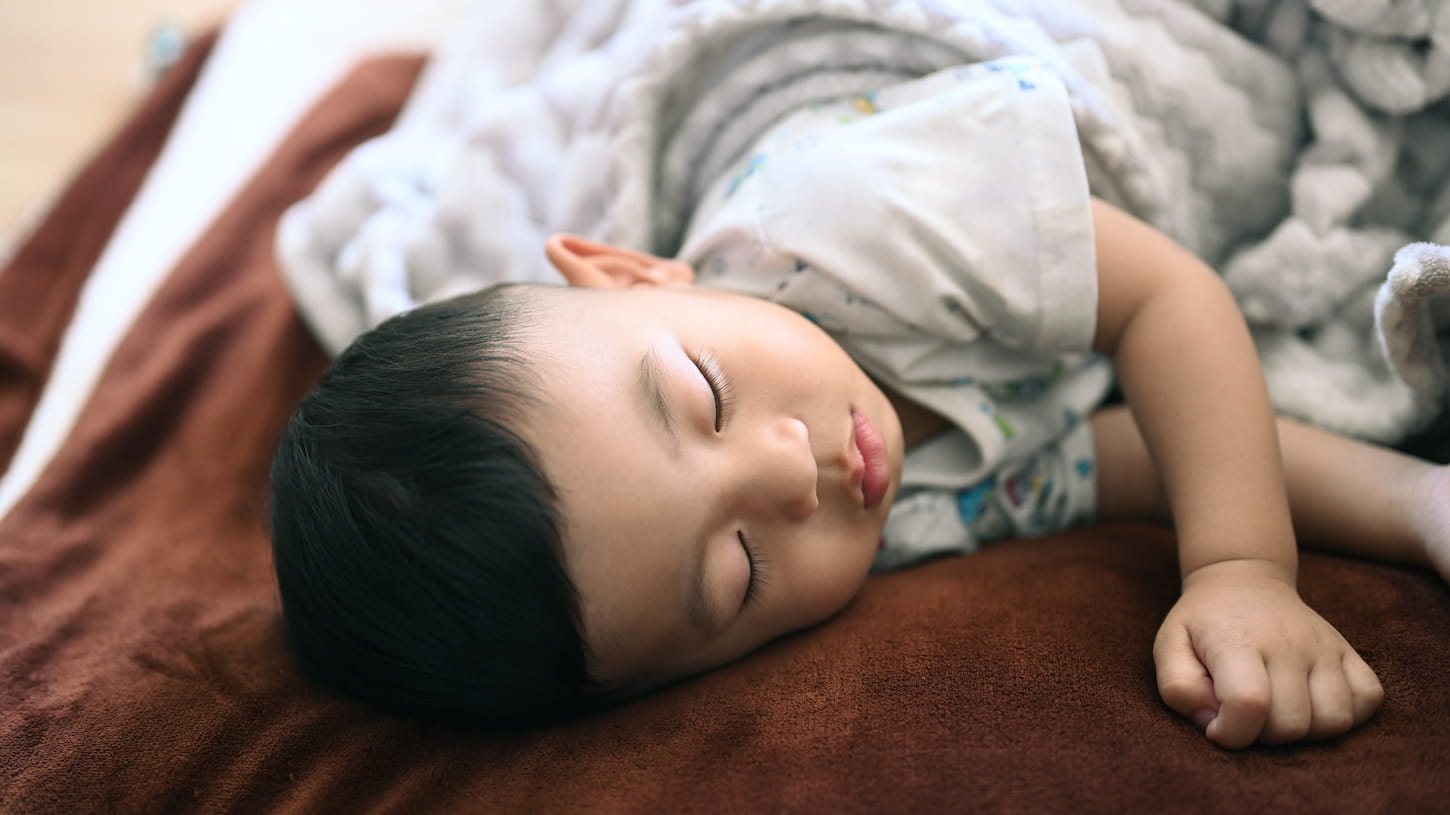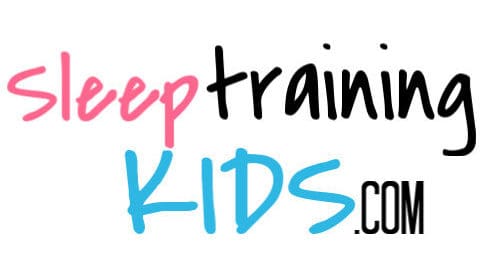The first time I heard the term “sleep training,” I hoped it was something I could do – and that it involved me catching up on sleep. While that’s been a side effect of sleep training my children, that’s not the actual definition. So, what is sleep training?
Sleep training is adjusting a child’s sleep behaviors so that the child gets adequate restful and restorative sleep for their age and needs. Sleep training regimens and methods use a variety of behavioral-based and/or cry-it-out style techniques to achieve results in varying amounts of time.
Ready to learn more about sleep training? Keep reading and let’s talk about the who, what, where, when, and why of sleep training!

What is Sleep Training?
Sleep training is helping someone acquire better sleep habits and behaviors so that they can get adequate and proper rest that their body needs. Usually, that someone is a child – often your own child.
Could an adult be sleep trained? Sure, I guess they could. But then it’s more of a self-training kind of thing. Or if you are getting outside help, it’s probably going to be from some combination of specialists (your physician, a sleep doctor, a therapist, sleep technicians, etc) and specialized equipment.
But this site isn’t for adults – it’s for kids. So let’s get your child sleep trained – because once they’re sleeping better (and not waking up every couple of hours) your sleep should improve, too.
Sleep training is an overall umbrella term. It generally refers to the whole process of achieving better sleep. Sleep training does not mean getting your child to sleep all night – or even a set number of hours each night.
Sleep training includes:
- Teaching your child the importance of sleep.
- Focusing on having healthier sleep hygiene and habits.
- The use of a bedtime routine.
- Any of several methods used to achieve a healthier, more sustainable sleep pattern for the whole family.
- Getting the whole family to sleep better and be happier.
- Getting an improvement in the quantity and quality of sleep.
When you’re sleep training, there are more than a dozen (and growing) programs, methods, regimes, and ways to implement things. This is great because this way there’s a program for almost every circumstance and family. We’ll talk about the specific methods in a moment.
First, let’s cover some of the basics that tend to get skipped – but are vital to sleep training.
When to Sleep Train Your Child
Generally speaking, you can sleep train your child any time they help improve their sleep quantity and quality – with one huge caveat. Until they’re at least 4+ months old, babies will not “learn” anything from sleep training. It’s not because they’re too young to learn yet – it’s because of normal human biology.
Human biology, growth, and development play a big part in sleep training children. It all ties into how our brains develop – and our sleep patterns. In fact, it’s not until babies are about 4 months old (or in some cases, older) that their brains mature enough to settle into the more adult-like sleep patterns of cycles, stages, and dreams.
So before that time, a baby sleeps and wakes in a much more random pattern. There’s little rhyme or reason. And for some of our babies, it’s absolute sleep/wake chaos.
In other words, all the scientific literature to date agrees that you may not be able to sleep train your baby until they’re at least 4-6 months old.
However, many families find that they are able to use the gentler sleep training methods as a practice or informal sleep training session. In that way, they’re able to see improvement or even success with sleep training.
So once your baby is at least 4 months old (actual or adjusted age for premature babies), then formal sleep training becomes an option for those who need it.
For more information on when to sleep train your child, read our complete guide on sleep training timing here.
How Long Does Sleep Training Take?
Most sleep training sessions take anywhere from a few days to several weeks or longer. Overall, though, sleep training generally takes about two weeks.
Timing will depend, in large part, upon the method you choose.
Generally speaking, faster results may require a few tears and crying-and-tears-free methods take longer to see success.
Want a more specific answer, based on the most commonly used sleep training methods? Click here to read our article on how long sleep training takes.

How to Sleep Train Your Child
When it comes to the how-to of sleep training your child, it’s six easy steps no matter which method you pick (and picking a method is step 3).
- Decide if you’re going to sleep train – and it’s the right call for your family.
- Research sleep training (you’re here, so yay! You’re doing this step now).
- Choose a sleep training method that appeals to your parenting style and that you think will work for your family.
- Create, implement, and evaluate your personal sleep training plan.
- Make changes as needed.
- Be patient and persistent – and stick with things. It may take up to 6 weeks to see successful results.
Want to read about each of these steps in detail? Click here to read our article on how to sleep train your child – the complete guide.
What is Sleep Training for Babies?
Sleep training babies means teaching them to string together their normal, 1-2 hour long sleep cycles into a longer, more cohesive night’s sleep.
However, babies may also require regular feedings that will put a normal disruption into the nighttime sleep schedule until they’re able to wean. Doctors say that most babies are able to nighttime wean after they’re at least 4-6 months of age, although your baby may disagree with that assessment (mine sure did!). 🙂
Sleep training babies also deals a lot with naps and nap times – and helping naps to become a regular part of the daily schedule. Naptime sleep training usually does best when it’s handled after nighttime sleep training. It may also take significantly longer to be considered successfully finished.
So sleep training babies is a balancing act – of nighttime sleep, naptime sleep, feedings, sleep regressions, and all the fun things that cause the middle of the night wake-up calls.
Many parents report faster success by learning and using baby wake times to help them guide their sleep training. Click here to read our beginner’s guide to using wake times and wake windows.
What is Sleep Training for Toddlers?
Sleep training for toddlers is a continuation of sleep training for babies – only with your child being able to move better and express a few opinions (either by toddler-speech or screaming).
If you haven’t weaned yet, weaning can become an issue to account for in your sleep training plan – otherwise, it can potentially trigger sleep regressions. Don’t worry – we’ve got posts on looking at weaning from either angle. To read our article on sleep training and weaning, click here. Or to read how sleep regressions can come with weaning, click here.
What’s Sleep Training for Little Kids and Preschoolers?
Sleep training as your child becomes big enough to be a “little” kid deals more with naps, daycare, preschool, and schedule changes. Even so, the principles you learned in sleep training for babies will still hold true for your child as they continue growing.
Just be sure to give them more pre-determined-by-you choices so they can express their opinions and exert some independence. That way, they’ll be more on board with the whole idea of sleep training.
Bedtime may also become a huge issue – as your little one decides that bedtime isn’t fun or wanted anymore! As such, it may also involve getting a little creative to find what works for their personalities to make bedtime a better success.
To read more about sleep regressions and preschool and preschool-aged kids, click here to read our article.
What is Sleep Training for Big Kids?
Sleep training for big kids usually deals with managing bad dreams, anxiety, and overcoming bad sleep habits. Even so, sleep training bigger kids is still very much possible – but you’re going to have to make a few tweaks to account for their age, personalities, and preferences.
Sleep training big kids also doesn’t work well with certain sleep training techniques, like pure extinction (cry-it-out) methods. Why? Because bigger kids can throw longer tantrums.
So be more selective in which method you pick – but don’t worry. We’ve got a whole guide on sleep training bigger kids right here for you.

Related Questions
Is Sleep Training Safe? Sleep training can be done safely, provided you account for your child’s needs. To learn how to make sleep training safe on every level, read our article on sleep training safety here.
How Long Do You Let a Baby Cry it Out? Most families report that cry-it-out sessions last between 1-2 hours the first night and crying stops between nights 3-5. Click here for everything you need to know about crying it out.
Is Sleep Training Bad? The American Academy of Pediatrics has found no long-lasting effects (positive or negative) from behavior-based sleep training techniques. Click here to read more about what pediatricians have to say about sleep training.
Get Sleep News and Tips in Your Inbox.
Any time there’s a new sleep study or a significant change in sleep training methodology, you’ll get an email with our explanation of it – and information on how you can implement the latest evidence-based research and practices. We only send emails a few times each month, max.
Join the Sleep Tight newsletter community!
It’s free to get cool stories, updates, and more. Subscribers get exclusive access to some cool extras and downloadable files via the subscriber-exclusive library.
We use SendFox as our email marketing platform. By submitting this form, you acknowledge that the information you provided will be transferred to SendFox for processing per their terms of use.
